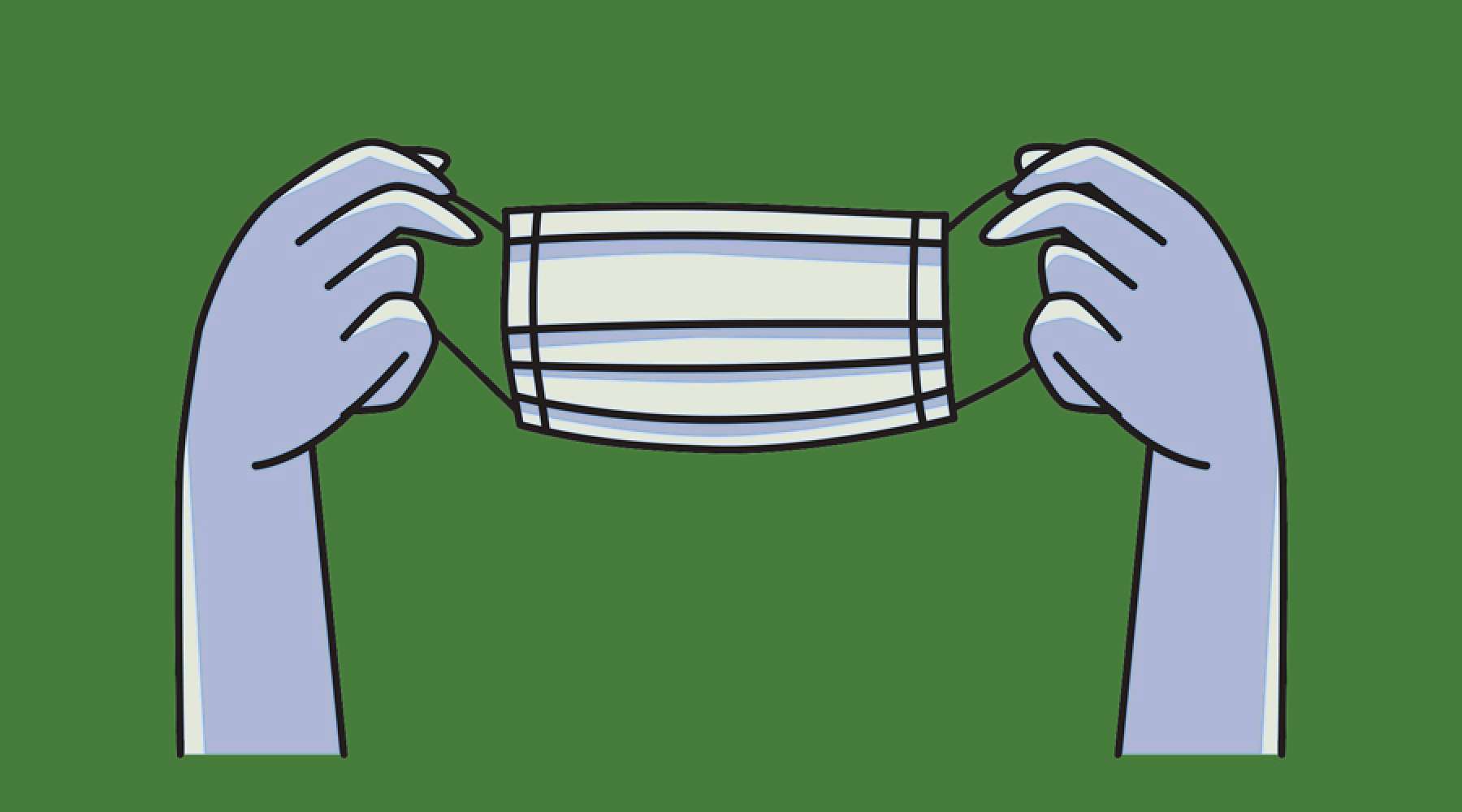
“Deep empathy for people makes our observations powerful sources of inspiration.”—David Kelley
This year, the Design & Innovation Club at Tuck kicked off the school year by hosting a design workshop for first years during Tuck Launch. The challenge presented was to “safeguard health through masks as we navigate in-person learning during COVID-19.” Over the span of three days, approximately 120 first years were taken through the design process with second-year design veterans and the culminating event was a pitch night with Deans Matthew Slaughter and Sally Jaeger as judges.
I was introduced to design thinking through my employer pre-Tuck. We used design principles to gain empathy with our target audience and created product prototypes that directly addressed their needs. To date, one of my fondest work memories is visiting the JetBlue tarmac in Ft. Lauderdale at midnight to visit staff members and interview them as they went about their jobs. We developed empathy with the customer by conducting interviews, recording their day-to-day, and understanding their challenges. Ultimately, those insights were used to develop a solution that positively impacted their workflow. This was a pivotal moment in my life since it changed how I approached any problem. I realized the importance of understanding the customer lens prior to developing solutions and recommendations.
Historically, consulting companies have used subject matter experts and deep secondary research to provide their clients with transformational recommendations to propel their business forward. The founding of IDEO, a consultancy firm that takes a customer-centric approach to problems, created a whole new approach to problem solving. According to the Harvard Business Review, “the physical props and highly formatted tools of design thinking deliver that sense of security, helping would-be innovators move more assuredly through the discovery of customer needs, idea generation, and idea testing.”
Typically, customer research has included a series of Google searches to understand the industry or an expert that develops a view on the customer’s needs. However, design thinking uses a customer-driven approach to identify the likes, dislikes, wants, frustrations, and more of customers via interviews, focus groups, video journaling, amongst others. Over the past decade, major consulting houses have acquired design agencies and started including designers on consulting teams that focus on the customer angle. Moreover, traditional companies are using design techniques as they begin their digital transformations to remain competitive in the world of FAANG. As evident, design is becoming central to our day-to-day lives going forward.
It was fairly early on in my Tuck journey that I crossed paths with Kate Balderston T’21. We immediately bonded over our passion for design and wanting to carve a path for fellow design enthusiasts at Tuck. Within weeks, we gained the support of our classmates to participate in the annual Kellogg Design Challenge. That specific year, the sponsor was Amazon Prime Video and multiple teams across Tuck had the opportunity to interview customer segments regarding digital media usage, which eventually led to three teams progressing to the semi-finals. It was our first deep dive into the design process at Tuck, and also the beginning of creating a design-driven campus for our classmates.
As our daily lives continue to be turned upside down by the pandemic, Tuck faculty, staff, and students started brainstorming ways to maintain the tight-knit atmosphere through online programming. Amongst a plethora of ideas, a design workshop for first years was floated with administration. Early conversations with Dean Jaeger brought about the idea of developing masks that could ensure the safety of students as Tuck opened up for a new school year. Kate and I went to work and developed various proposals regarding the topic and layout of the workshop. Within weeks, one of our proposal was accepted and we started developing detailed content and gathering volunteers.
Fast forward a few weeks, and we recruited a group of T’21s (huge shoutout to Omika Jikaria T’21 and Simon Hirsch T’21) to facilitate the workshop. Dean Matthew Slaughter, Dean Sally Jaeger, Professor Steve Kahl, and Professor Alva Taylor lined up to serve as judges for the pitch night. Moreover, we had a packed agenda that included walking the participants through the first four phases of the design process that would be applied via the development of masks for students. The level of creativity and enthusiasm we received from the first years was absolutely amazing! Kate and I picked the finalists from a set of over 15 submissions, and each idea leveraged learnings from the workshop to develop a prototype of a mask that could be used at Tuck.
Due to the virtual nature of the workshop, we used creative techniques and tools to ensure that the workshop was fruitful from a learning and development perspective. For example, we used an online software tool, Miro, that allows users to collaborate and develop mind maps (and more) through the use of digital sticky notes (we all know sticky notes are the basis of design, so this tool came in very handy!). Moreover, to avoid technical glitches during pitch night, we had all the finalists record their pitches, which was then followed by a live Q&A with our judges.
Our winning team consisted of five first years: Tabitha Bennett, Melissa Leung, Kimberly Russell, Ragini Bali, Yuta Ohashi. They developed a concept around an e-commerce site that allows you to customize your mask to fit your specific needs and face. While the concept was not a mask, the judges and audience were impressed by the use of the design process and the quality of the presentation. The success of the workshop and pitch night made us hopeful regarding the potential inclusion of a design-based workshop for Tuck Launch for years to come! As Professor Steve Kahl says “I thought the workshop was not only a great chance to intermingle T‘22s and T’21s, but also a way to teach design thinking fundamentals and apply these learnings to a project in teams.”
I am incredibly excited to see the impact that design thinking has had on companies across the globe, and it is my honor to be one of the few students on campus who is driving a design-based culture. Kate and I are excited to carry out bigger and better plans for the school year, and we hope you join us!

Saachi Shah T’21 was raised in the suburbs of Chicago and spent four years working as a Technology Strategy Consultant at Accenture. Subsequently, she worked as an Innovation Manager at Thales xPlor, an innovation unit within a French tech conglomerate. On campus, she serves as the Co-Chair for the Design & Innovation Club and Technology Club. This summer, she interned within the Innovation team of Honeywell, where she functioned as a product manager on a virus-eliminating air purifier. Saachi holds a B.S.E in Systems Engineering from the University of Illinois, Urbana Champaign.